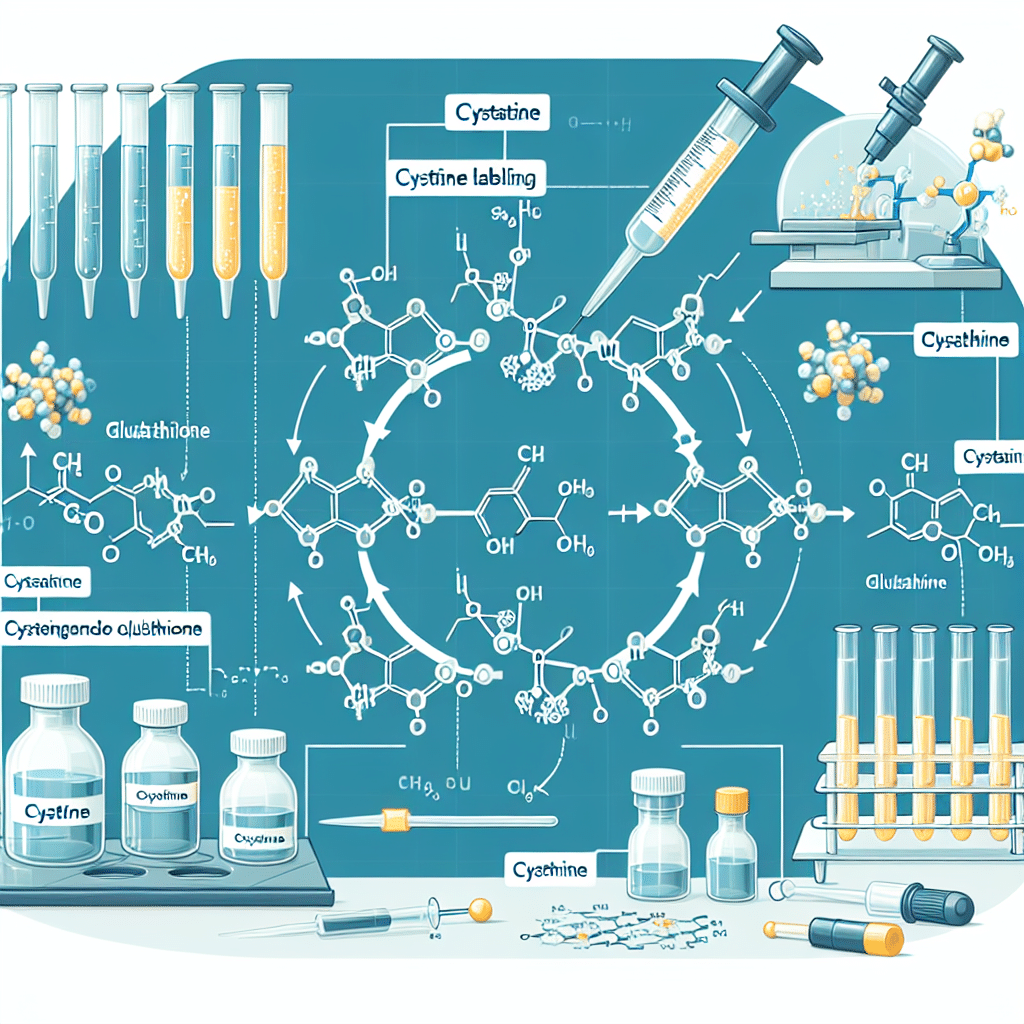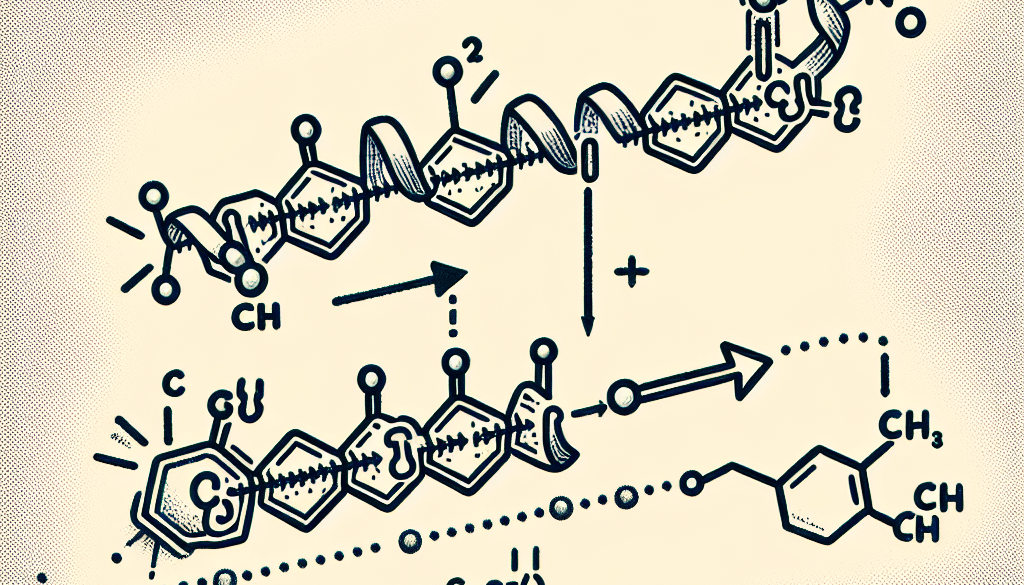Cysteine Labeling of Glutathione: Techniques
-
Table of Contents
- Cysteine Labeling of Glutathione: Advanced Techniques and Applications
- Understanding Cysteine Labeling
- Techniques for Cysteine Labeling of Glutathione
- Chemical Labeling Methods
- Enzymatic Labeling Methods
- Applications of Cysteine-Labeling Techniques
- Case Studies and Examples
- Conclusion: Key Takeaways from Cysteine Labeling of Glutathione
- Discover ETprotein’s High-Quality Protein Products
Cysteine Labeling of Glutathione: Advanced Techniques and Applications

Glutathione, a tripeptide consisting of glutamate, cysteine, and glycine, is a critical molecule in cellular processes, including detoxification, antioxidant defense, and the modulation of cell proliferation. The unique thiol group of the cysteine residue in glutathione is responsible for its biological activity. Consequently, the labeling of cysteine in glutathione has become an essential technique in biochemical research to study its dynamics and interactions within biological systems. This article delves into the various techniques used for cysteine labeling of glutathione, their applications, and the insights they provide into cellular processes.
Understanding Cysteine Labeling
Cysteine labeling involves the selective attachment of probes or tags to the thiol group of cysteine residues in proteins or peptides like glutathione. This process is crucial for studying the structure, function, and location of glutathione within cells. The choice of labeling technique depends on the specific requirements of the study, such as the sensitivity needed, the nature of the probe, and the biological context.
Techniques for Cysteine Labeling of Glutathione
Several methods have been developed for the specific labeling of cysteine residues in glutathione. These techniques can be broadly categorized into chemical labeling and enzymatic labeling methods.
Chemical Labeling Methods
- Fluorescence Labeling: This method involves attaching fluorescent dyes to the thiol group of cysteine. Fluorescent labeling is widely used due to its high sensitivity and the ability to monitor labeled glutathione in real-time using fluorescence microscopy or spectroscopy.
- Mass Spectrometry-Based Labeling: Isotope-coded affinity tags (ICAT) and tandem mass tags (TMT) are used to label cysteine residues for quantitative mass spectrometry analysis. This approach allows for the precise quantification of glutathione and its post-translational modifications.
- Biotinylation: Biotin tags can be covalently attached to cysteine residues, allowing for the subsequent capture and isolation of labeled glutathione using streptavidin-coated surfaces.
- Spin Labeling: Paramagnetic tags are attached to cysteine residues for electron paramagnetic resonance (EPR) spectroscopy studies, providing information on the conformational dynamics of glutathione.
Enzymatic Labeling Methods
- Site-Specific Proteases: Enzymes like sortase can be used to attach probes to the cysteine residue of glutathione at specific recognition sites, allowing for precise labeling.
- Ligase-Based Labeling: Enzymatic ligation techniques, such as intein-mediated splicing, can be employed to attach synthetic probes to cysteine residues.
Applications of Cysteine-Labeling Techniques
Cysteine labeling of glutathione has a wide range of applications in biological research. Here are some of the key areas where these techniques are employed:
- Studying Redox Biology: By labeling glutathione with fluorescent probes, researchers can monitor changes in the redox state of cells and understand the role of glutathione in oxidative stress.
- Drug Development: Cysteine-labeled glutathione can be used to screen for potential drug candidates that target glutathione-related pathways.
- Understanding Disease Mechanisms: Abnormal glutathione levels are associated with various diseases, including cancer and neurodegenerative disorders. Labeling techniques help elucidate the mechanisms by which glutathione contributes to these conditions.
- Proteomics: Mass spectrometry-based labeling of glutathione enables the comprehensive analysis of the glutathione proteome and its interactions with other proteins.
Case Studies and Examples
Several studies have successfully utilized cysteine labeling of glutathione to gain insights into cellular processes. For instance, researchers have used fluorescence labeling to visualize the distribution of glutathione within cancer cells, revealing how it contributes to drug resistance. In another example, mass spectrometry-based labeling has been used to quantify changes in glutathione levels in response to environmental stressors, providing clues about how cells adapt to changing conditions.
Conclusion: Key Takeaways from Cysteine Labeling of Glutathione
Cysteine labeling of glutathione is a powerful tool in the arsenal of biochemical research. It enables the detailed study of glutathione’s role in cellular processes and disease mechanisms. The techniques discussed offer a range of options for researchers, from high-resolution imaging to quantitative proteomics. As our understanding of glutathione’s function in health and disease continues to grow, so too will the sophistication and utility of cysteine-labeling techniques.
Discover ETprotein’s High-Quality Protein Products
If you’re involved in research or product development that requires high-quality protein products, ETprotein is a company worth considering. They offer a wide range of organic bulk vegan proteins and L-(+)-Ergothioneine (EGT) that can support your work in nutraceuticals, pharmaceuticals, cosmeceuticals, and more. With a commitment to non-GMO, allergen-free products and high purity standards, ETprotein is a reliable source for your protein needs.
About ETprotein:
ETprotein, a reputable protein and L-(+)-Ergothioneine (EGT) Chinese factory manufacturer and supplier, is renowned for producing, stocking, exporting, and delivering the highest quality organic bulk vegan proteins and L-(+)-Ergothioneine. They include Organic rice protein, clear rice protein, pea protein, clear pea protein, watermelon seed protein, pumpkin seed protein, sunflower seed protein, mung bean protein, peanut protein, and L-(+)-Ergothioneine EGT Pharmaceutical grade, L-(+)-Ergothioneine EGT food grade, L-(+)-Ergothioneine EGT cosmetic grade, L-(+)-Ergothioneine EGT reference grade and L-(+)-Ergothioneine EGT standard. Their offerings, characterized by a neutral taste, non-GMO, allergen-free attributes, with L-(+)-Ergothioneine purity over 98%, 99%, cater to a diverse range of industries. They serve nutraceutical, pharmaceutical, cosmeceutical, veterinary, as well as food and beverage finished product distributors, traders, and manufacturers across Europe, USA, Canada, Australia, Thailand, Japan, Korea, Brazil, and Chile, among others.
ETprotein specialization includes exporting and delivering tailor-made protein powder and finished nutritional supplements. Their extensive product range covers sectors like Food and Beverage, Sports Nutrition, Weight Management, Dietary Supplements, Health and Wellness Products, and Infant Formula, ensuring comprehensive solutions to meet all your protein needs.
As a trusted company by leading global food and beverage brands and Fortune 500 companies, ETprotein reinforces China’s reputation in the global arena. For more information or to sample their products, please contact them and email sales(at)ETprotein.com today.














